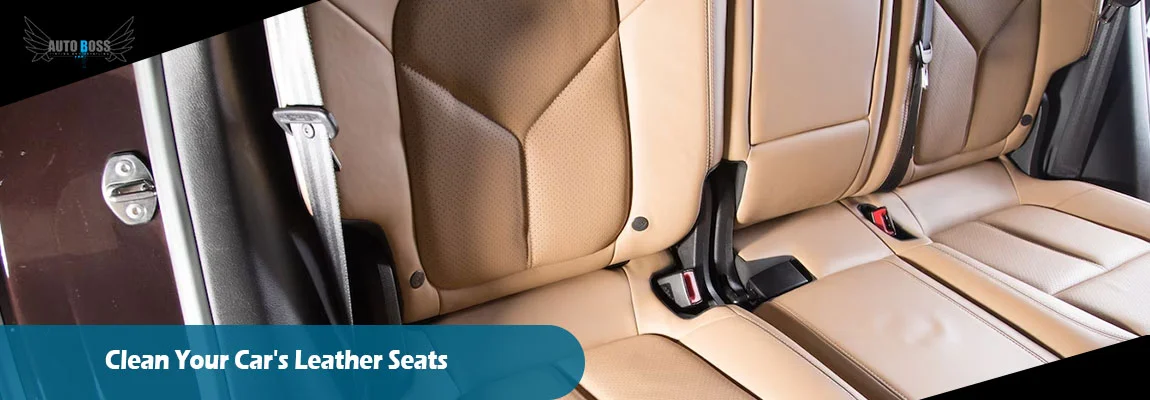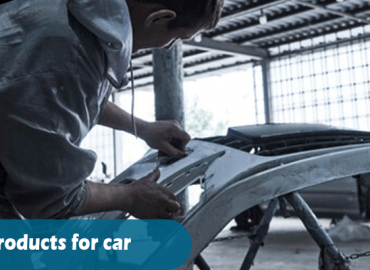Leather seats are an essential part of your car. They require proper maintenance to remain in the top condition. Leather on seats can fade or crack from consistent exposure to sunlight. However, proper care can keep them in better condition for a long time. If you clean them and adequately care for them, it can improve your vehicle’s value.
Full interior detailing for leather seats will enhance their life and the car’s value. There are two essential components to cleaning them.
- Deep cleaning
- Leather conditioning
Leather seats give a luxurious feel to your car. You must clean and maintain your leather seats to retain their luxurious looks. It would be best if you did this practice regularly.
Cleaning your leather seats is the best practice. However, it is important to avoid damaging leather seats. Please don’t use too aggressive or harsh a cleaning solution or tool because it can damage the leather of your car seats.
Here are some critical questions that must be in your mind. What to do when the seats look dull? How can you prolong the life of the seats? Is your cleaning method suitable? You will find answers to these questions in this blog.
The best way to clean your seats
The best way to clean you will require these tools to clean your leather seats.
- Clean or new microfiber towel
- A solution or leather cleaners
- A vacuum cleaner.
- A leather conditioner.
Steps to clean your leather seats include:
Step 1: Apply a leather cleaning agent to your seats.
Step 2: Scrub the car seats with a detailing brush
Step 3: Wipe off the solution with a microfiber towel.
Follow the procedure step-by-step to ensure cleaning, protection, and maintenance. Here, I will discuss in detail the cleaning process of your vehicle without causing discoloration, wrinkles, or cracking.
Apply a cleaning solution.
Select the cleaning solution suitable for your vehicle and apply it to the leather seats. Please put it on the leather areas like the dashboard and center console. Let the solution settle for a minute. It will break up contaminants retained on your seats.
Apply this solution on an application pad or microfiber towel on every section, from minor to primary. It will help you avoid overspray and ensure the cleaning solution doesn’t end up on windows or windshields. We at Auto Boss Vaughan recommend wiping off by using a damp towel.
Scrub the solution until foamy
Dip the detailing brush into water and scrub the applied cleaning solution to form a lather on your seat.
Use a power drill with a soft bristle head brush if the detailing brush is insufficient to clean your seats thoroughly. You can use this method to clean your seats and hard plastic softly.
Wipe off the excess solution
After cleaning the seats, wipe off the excess solution with a microfiber towel. Avoid keeping them damp for long. Use a clean towel to remove the excessive cleaning solution and pick up the dirt. Now the car seats are clean and dry, you can condition them.
Conditioning
Apply a leather conditioner directly to your seats, and let it cure. It will take a few minutes to cure. Use a clean, soft microfiber towel to remove excess conditioner. Once you have conditioned your seats, the leather on them feels supple, and there is no more greasy look.
If you observe a part of dry leather, repeat the conditioning steps. Repeating the conditioning steps ensures that it is protected and thoroughly moisturized. Dry leather can crack easily. It happens when you leave your leather seats unattended and not maintained for long.
Products for cleaning
Every car owner has their budget and preferences regarding cleaning products. Here, I will provide a few DIY and budget-friendly options to fulfill your cleaning needs.
Leather Cleaners
Leather honey: a cleaner with a touch of honey texture. It has nontoxic and water-repelling properties. You can use this product even when your car has gone through years of wear and tear.
Spraying leather cleaner
A spraying leather cleaner is pH neutral, which makes it ideal for cleaning leather areas. It also preserves durability, strength, and appearance. The cleaner can penetrate the leather pores and remove dirt from them. It acts as a conditioner.
DIY leather cleaners
Here, I will guide you about the DIY leather cleaners you can use at home.
Vinegar
It is a natural cleaner with antibacterial properties. It doesn’t cause harm to your car seats. You must spray it on the seat and wipe it off using a clean and dry cloth.
Baking soda
Baking soda can suck dampness and dirt from the leather. You can apply this as a conditioner after the cleaning process.
Rubbing Alcohol
It works for cleaning the stains from your leather seat. You may require a cotton ball to apply rubbing alcohol for surface cleaning. After stain cleaning, apply warm water and dishwashing soap to clean the alcohol.
Conditioning products
Leather conditioning helps you maintain the seat appearance to prevent cracking and tearing.
Auto Boss Vaughan recommends some market-available DIY conditioners
Conditioners available in the market
Heavy-duty LP natural oils ensure seat protection from cracks and tears. Make sure that you are using pH-neutral products on your vehicle.
Bick 4 conditioner
The conditioner will not darken the leather after application, which makes it a color-maintaining agent for your car seats. It is a wax-free product that ensures not sealing up leather pores.
Megular’s G18616 gold-class leather conditioner
It contains aloe and moisturizing oil to maintain the seat’s original appearance. It provides protection against UV rays to prevent fading and aging, making it the best choice for people in hot climates.
DIY leather conditioners
Some natural products can act as a conditioner for leather seats.
Coconut oil
Coconut oil has conditioning properties for your skin and hair. It seeps into the cracks of the leather and restores the smooth look.
Beeswax
It is an antifungal product that protects the leather seats from bacteria, mold, and other unwanted organisms. It restores the water resistance qualities and keeps your leather seats from looking better for long. Apply this beeswax to your leather seats with your fingers. Rub it and remove the excessive wax with a microfiber cloth.
Flaxseed oil
The oil absorbs into leather pores and leaves it with an elegant shine. It protects the leather from humidity. It does not cause allergies, which makes it an alternative to conditioners available on the market.
Conclusion
Leather seats will crack and age if you don’t maintain them properly. Following these steps:
- Apply cleaners.
- Scrub your leather seats with a detailing brush.
- Wipe off the excessive cleaner with a clean cloth or microfiber towel.
- Apply conditioner according to your requirements.
Taking proper care of leather seats requires expertise, time, and resources. If you want to apply it, it is not a cup of tea. Hire a professional from Auto Boss Vaughan. We will help you in maintaining your seats. Our cleaning and conditioning professionals are one of the best detailing service providers.
FAQs
Which solution should be avoided for cleaning?
Clean leather seats with cleaning solution and water. Some chemicals like lemon juice, alkaline, tartar, or strong acid are unsuitable for leather. These chemicals can cause discoloration.
Is applying leather wax on leather seats suitable?
Avoid spraying wax on leather seats, mainly made from perforated leather.
How to protect leather seats from cracking?
You can Clean and condition your seats regularly to avoid cracking. Avoid too much exposure to sunlight, as that affects leather texture.




